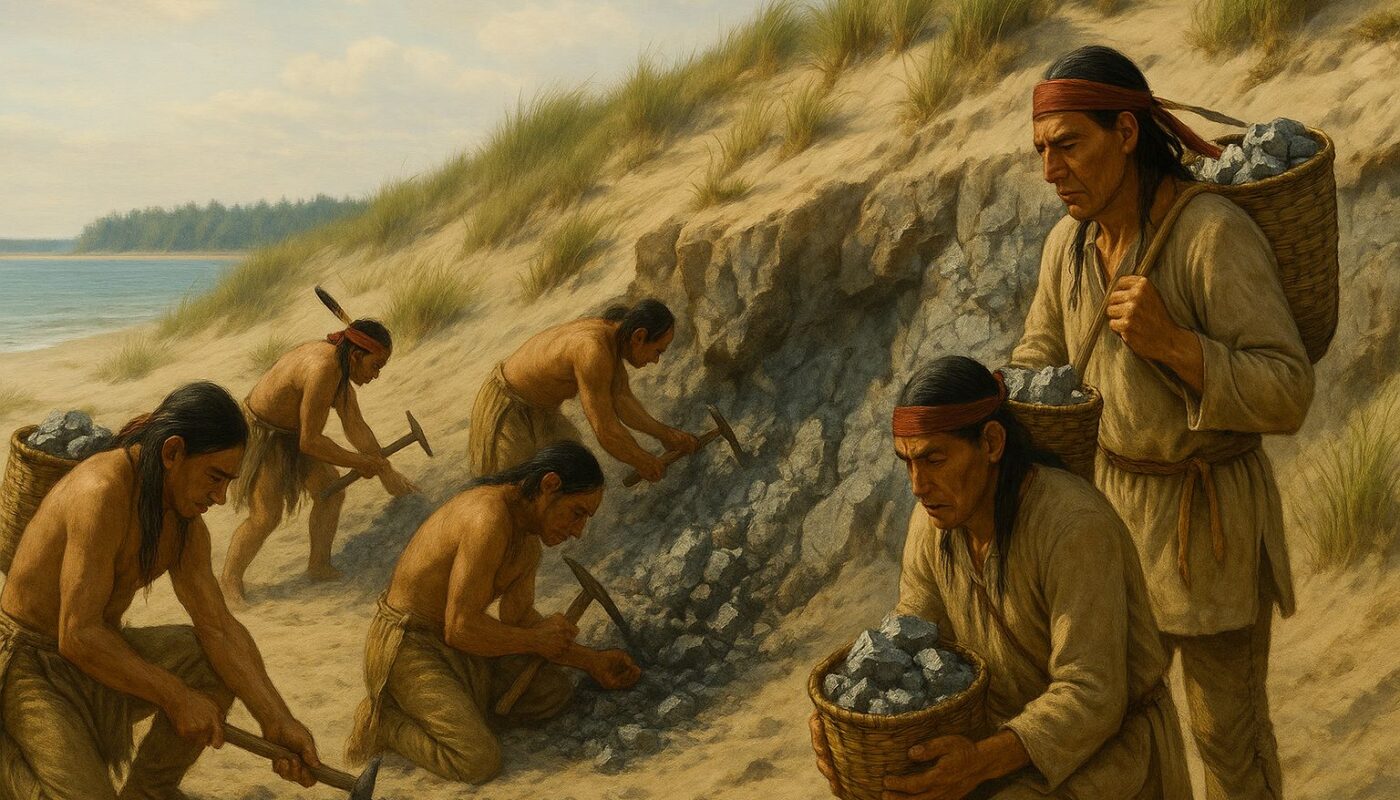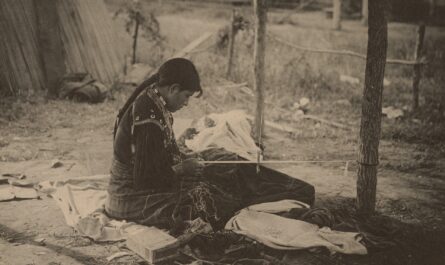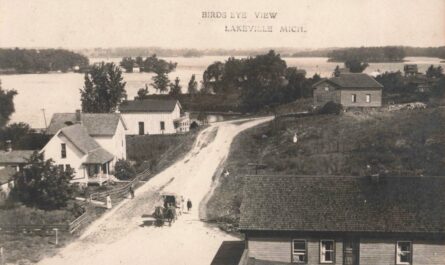In the early 1900s, news broke of a lead and zinc strike just six miles east of Caseville, tucked along the shoreline of Saginaw Bay. The story, first reported in the Detroit Free Press on December 8, 1907, sparked excitement across Huron County. But behind the industrial promise of drilling rigs and bank-backed ventures was an older, more curious tale—a legend whispered for generations.
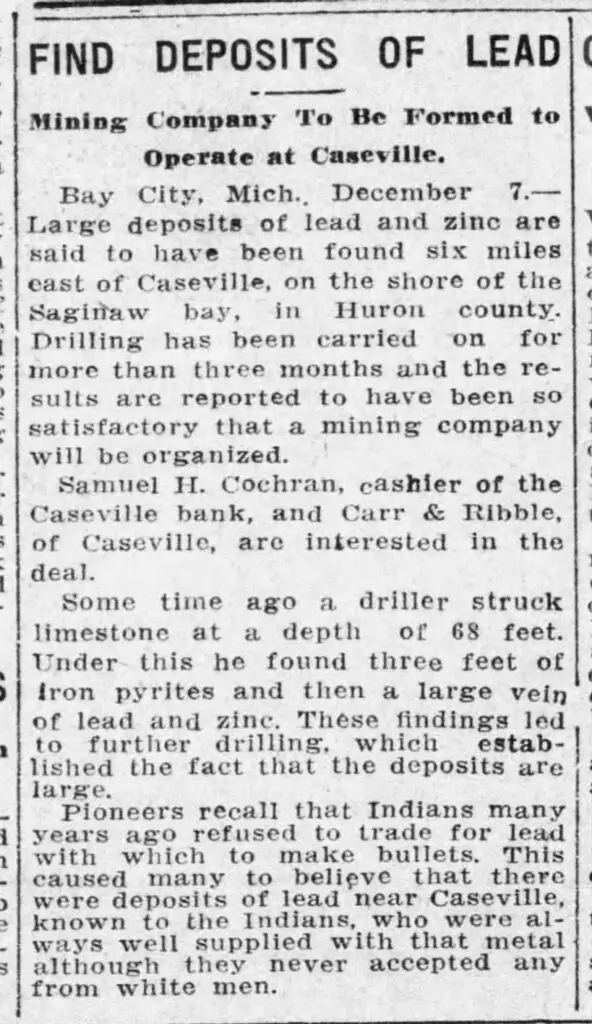
Long before businessmen poked holes in the limestone bedrock, local pioneers recalled a puzzling habit among the area’s Indigenous people. According to early settlers, native tribes in the Thumb region consistently refused to trade for lead bullets offered by white traders. It wasn’t out of distrust. It was because they didn’t need them.
The tribes, it was said, already had access to lead—and plenty of it. But no one ever saw where it came from.
That quiet refusal sparked decades of speculation. Settlers began to suspect that the area around Caseville hid a natural supply of lead, known only to the tribes who lived along the shoreline. The legend persisted, but proof remained elusive—until the early 20th century.
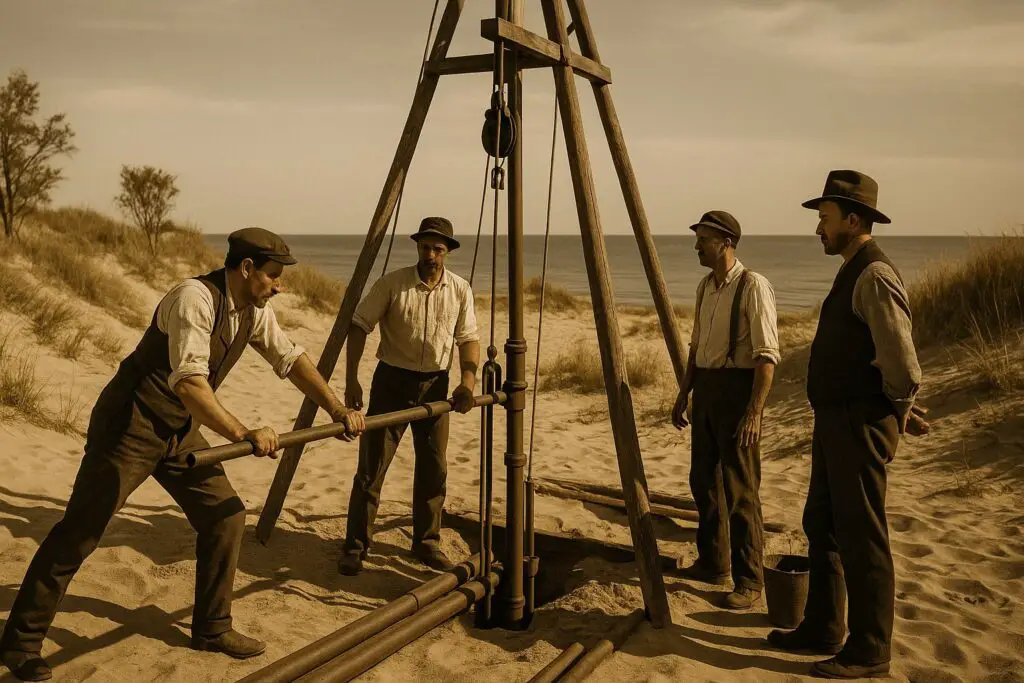
In 1907, a driller exploring the region struck limestone at a depth of 68 feet. Below it, he unearthed three feet of iron pyrite. Then came the jackpot: a vein of lead and zinc large enough to justify further exploration. Drilling continued for months. The results were so promising that a mining company was proposed, backed in part by Samuel H. Cochran, cashier of the Caseville bank, along with local businessmen Carr & Ribble.
The news was more than a business opportunity—it was confirmation of a long-standing local legend.
The report linked the find to the native lore that had circulated for decades. If true, it would mean that Indigenous people had long known of the lead deposits, likely sourcing the metal directly from the earth rather than European trade. It also explains their quiet refusal to barter for something they already had—on their terms, from their land.
While the mining venture never became a major operation, the story behind the discovery still lingers. It’s a rare example of how folklore and memory can shape real-world exploration. The old tale of the “Indian lead mine” was dismissed as myth by many. But just beneath the soil east of Caseville, it turned out there was something real after all.
Author’s Note: This 1907 clipping from the Detroit Free Press is one of the earliest written records tying Native oral history to a real mineral find in Michigan’s Thumb. If you’re wandering the old roads near the shoreline east of Caseville, it’s worth wondering: is there more still buried under those little bluffs?

